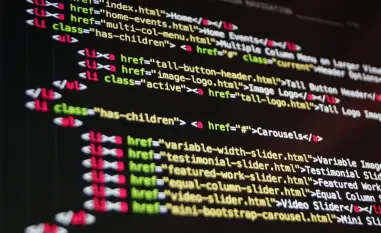Malik Haidar is recognized for his profound expertise in cybersecurity, earning accolades for his strategic approaches in integrating business imperatives with security measures. Engaged with multinational corporations, Malik’s focus on analytics and intelligence has fortified defenses against sophisticated cyber threats. In this interview, Malik explores the intricacies of a formidable malware campaign leveraging Remcos RAT and discusses emerging cyber threats, novel attack vectors, and the evolving challenges professionals face.
Can you explain the recent malware campaign that uses a PowerShell-based shellcode loader to deploy Remcos RAT?
This campaign exemplifies a sophisticated attack strategy that capitalizes on native Windows tools to circumvent conventional defenses. By embedding shellcode within PowerShell scripts facilitated through a chain of deceptive files, attackers deploy the Remcos RAT without leaving significant traces. This fileless approach allows the malicious code to execute directly in memory, making detection by traditional security solutions more challenging.
What role do malicious LNK files play in the attack process?
Malicious LNK files are central to this attack. They act as innocuous-looking shortcut files within ZIP archives, often masqueraded as familiar office documents. Their role is critical because they initiate the execution process through legitimate Windows utilities like mshta.exe, effectively launching the attack without raising suspicion.
How are these LNK files typically disguised to deceive users?
Disguising LNK files is a craft well-honed by threat actors. They are cleverly hidden within ZIP archives and made to appear as standard office documents, which are often compelling due to the use of themes like tax documents or business proposals. This guise is intended to trick users into interacting with the files, thereby starting the infection chain.
Could you describe the initial stage of the attack chain and how mshta.exe is utilized?
The attack utilizes mshta.exe, an authorized Windows component, to process malicious HTA scripts. At the initial stage, when the LNK file is activated, mshta.exe acts as a proxy to execute the hostile HTA files remotely, laying the foundation for further malicious actions. This approach effectively exploits Windows functionalities to execute harmful scripts under legitimate process scopes.
How does the “xlab22.hta” file factor into the execution process?
“xlab22.hta” forms a pivotal element of the attack, hosting and executing scripts riddled with obfuscations. Its primary purpose is to download auxiliary components, including the PowerShell script needed for executing further payloads. By operating from a remote server, it further distances crafty activities from detection or attribution.
What specific actions does the “311.hta” file perform once launched?
Upon its initiation, “311.hta” completes the setting for persistent attack mechanisms. It manages settings within the Windows Registry to ensure that it launches with system startups, thereby guaranteeing ongoing exploitation and control. The file also works with others to continue deploying steps crucial for payload delivery like the PowerShell script injection.
How does the PowerShell script contribute to deploying the Remcos RAT payload?
The PowerShell script is a significant agent in deploying the payload. It takes a decoded shellcode after being downloaded through HTA files and reconstructs it for execution, allowing Remcos RAT to operate entirely within the system’s memory. Its dynamic structure permits it to evade static scanning techniques that rely on disk evidence.
What capabilities does Remcos RAT offer to threat actors once installed on a compromised system?
Remcos RAT is notorious for granting comprehensive control over targeted systems. It enables actions from keystroke logging and screen captures to manipulating ongoing processes and programs. Its versatility and robust modules make it a potent tool for espionage, data theft, and system manipulation.
What is the significance of the TLS connection established by Remcos RAT to the C2 server?
The establishment of a TLS connection to the command-and-control server marks a key step in data exfiltration and remote control. This secure channel ensures that communications between the compromised system and threat actors remain encrypted and undetected, facilitating uninterrupted oversight and command execution.
Why do fileless versions of Remcos RAT evade detection by conventional security solutions?
Fileless variants operate by script execution in memory, bypassing many conventional security checks that focus on file integrity and disk operations. By leveraging native Windows tools, these attacks become more elusive, significantly reducing the footprint and masking malicious activities within trusted processes.
Can you discuss the increasing trend of PowerShell-based attacks and their implications for cybersecurity?
The rise in PowerShell-based attacks underscores a shift towards exploiting built-in system tools, known for their flexibility and control capabilities. As PowerShell is integral to both administrative tasks and system management, its misuse highlights vulnerabilities that attackers can readily capitalize on, demanding advanced detection mechanisms and timely countermeasures.
How can advanced email security solutions mitigate such attack vectors involving LNK attachments?
Email security solutions must evolve to preemptively identify and filter malicious attachments, especially LNK files. Employing machine learning for behavioral analysis, combined with real-time scanning, offers the best defense against these evolving threats. Detection before the user interaction prevents the SIP (Security of Information Process) from unrolling malware delivery.
What is the function of real-time scanning of PowerShell commands in defense against such attacks?
Real-time scanning provides a dynamic layer of security by continuously monitoring PowerShell command activity for signs of malicious behavior. It allows for instant response to anomalies, cutting off scripts with unauthorized actions before they execute harmful payloads.
Can you describe the .NET loader detailed by Palo Alto Networks Unit 42 and Threatray?
The .NET loader serves as a versatile tool for staging malware deployments. Featuring multiple stages allowing secure transitions and evasion, it first decrypts embedded payloads before deploying them in memory. This sophistication offers malware operators flexible and stealthy attack options.
How does the loader utilize steganography techniques to conceal malicious payloads?
Steganography is cleverly applied through image files, exploiting bitmap resources to hide malicious payloads. This approach permits threat actors to mask executable content within image data, bypassing conventional security mechanisms focused on explicit code analysis.
What recent phishing and social engineering campaigns have been linked to credential theft and malware distribution?
Cyber actors have launched campaigns using advanced social engineering tactics, which often involve trojanized software and deceptive URLs. From exploiting widely-used software like KeePass to crafting fake Office documents, these campaigns aim to manipulate user trust and execute malware stealthily.
Can you outline the tactics used in trojanized KeePass password management software for malware delivery?
Threat actors have devised methods leveraging modified KeePass installers, placing malicious payloads that steal sensitive user data once installed. Using typosquatted domains for distribution, these modified versions target unwary users seeking legitimate updates and enhancements, achieving stealthy access to credential troves.
How do ClickFix lures contribute to deploying Lumma Stealer, and what intermediary dropper URLs are involved?
ClickFix lures rely on deceptive PDFs and embedded URLs, coaxing users into unknowingly opening links that lead to intermediary sites. These sites then deploy Lumma Stealer, operating as a conduit for malicious code and extending the attack reach.
What role do booby-trapped Microsoft Office documents play in disseminating the Formbook information stealer?
Booby-trapped Office documents exploit architecture vulnerabilities to install Formbook, a potent information stealer. These documents, with their pre-loaded malicious scripts, mask malevolence in otherwise routine tasks, elevating stealth and ensuring wider penetration through trusted environments.
How are blob URIs exploited in phishing schemes to capture credentials from victims?
Blob URIs provide a clever means to host phishing content impersonating legitimate services. By leveraging trusted domains to serve covert redirections, attackers attract users to mimic pages that efficiently capture sensitive credentials, culminating in high-profile theft endeavors.
Can you discuss the use of RAR archives to distribute NetSupport RAT and its target regions?
RAR archives serve as cloaked delivery vehicles for NetSupport RAT, executed under the guise of installation files specific to targeted geographic areas like Ukraine and Poland. Such disguises align attack themes with regional concerns, augmenting their effectiveness.
What methods are employed via phishing emails to capture victims’ credentials and send them to a Telegram bot?
Through ingeniously devised phishing emails, attackers use embedded malicious HTML attachments that systematically direct victims to capture portals. These credentials, once harvested, are exfiltrated to Telegram bots designed explicitly for rapid dispatch and exploitation of captured data.
What impact has AI had on facilitating polymorphic phishing campaigns, and how do these campaigns evade detection?
AI has revolutionized phishing dynamics, creating campaigns that intelligently adapt through polymorphic strategies. These methods adjust elements in real-time, circumventing static filters and striking with personalized messages, exploiting vulnerabilities with precision and confidentiality.
Do you have any advice for our readers?
In a dynamic cyber landscape, vigilance, and proactive engagement with comprehensive cybersecurity measures become indispensable. Empowering oneself with knowledge about evolving threats and employing advanced security technologies are simple yet effective strategies to safeguard personal and professional domains.













